Last year, having lunch with friends, we were talking about places we had always wanted to visit. Never mind the Great Wall of China or the mountains of Switzerland, I have always longed to visit Charleston, the farmhouse where Vanessa Bell lived and worked, and entertained her friends and family. Given it’s in Sussex and not the other side of the world, it wasn’t too difficult to combine a visit with our half-term trip to Hastings, and it was completely worth the wait. (I wouldn’t bother trying to get coffee there, though - slowest service I’ve encountered!)
There is something marvellous about visiting the homes of artists and writers. Literary tourism is sometimes sniffed at in academia (it’s about the books, not the people and their homes!) but for so many people it can be really meaningful and pleasurable to visit somewhere related to art or books that you love. And I do love Vanessa Bell’s work (and also Virginia Woolf’s, obvs). Last year I saw the exhibition ‘Vanessa Bell: A World of Colour and Form’ in Milton Keynes (see my review here) and it’s now on at the Charleston Gallery in Lewes; the exhibition reminded me how much I am drawn to Bell’s vision and use of colours.
There is almost always something delightfully bonkers revealed in such homes. Horace Walpole’s Strawberry Hill is where he invented Gothic as a literary genre and his home (formerly known as Chopp’d Straw Hall) as a Gothic castle. William Morris’s homes at Red House and Kelmscott Manor perhaps bear the strongest relation to Charleston, because they are where artists and writers met and worked as well as lived their daily lives; they leave their mark on the building throughout, mostly in the form of paint.
Vanessa Bell, with her friend/lover Duncan Grant and his lover, David ‘Bunny’ Garnett, moved into Charleston in 1916, finding a countryside haven during the war. Virginia Woolf wrote to her sister that:
Leonard went over it, and says it’s a most delightful house and strongly advises you to take it . It has a charming garden, with a pond, and fruit trees, and vegetables, all now rather run wild, but you could make it lovely.
Vanessa lived there until her death; her children were born there and domestic life ran (haphazardly) alongside the work of artists and writers: not only creating, but thinking, talking, imagining. The walls are full of it…
Like the Pre-Raphaelites, the Bloomsbury Set (a term I usually avoid, actually - it seems rather reductive) infused their surroundings with their principles. From the apparently wild but carefully tended garden (both then and now) to the painted fireplaces, bookshelves, doors and walls, this house would have been radical - still is, in many ways - for its intentionally slightly-homemade appearance (you can see the pencil marks through the paint on some of the doors, for example), it’s over-decoration which fills the eyes, and its remarkable and joyous informality. I think the term I would use for the place is ‘abundant’ - full of life and colour. Bell herself wrote:
The fact is that one hasn’t had a moment to oneself during domestic life in the country. Nature is too much for me altogether, either in the shape of weeds or children, and fills up all one’s spare time.
Yet somehow it is also a restful house, which feels planned for quiet reading, intense work or study, and conversations with friends.
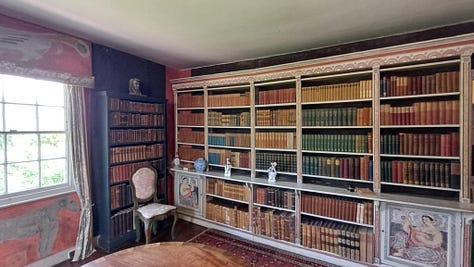
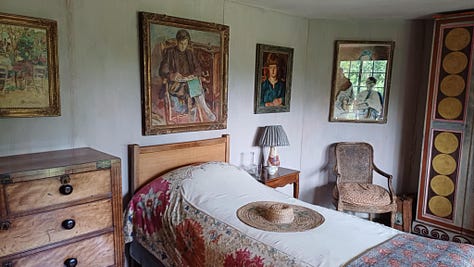
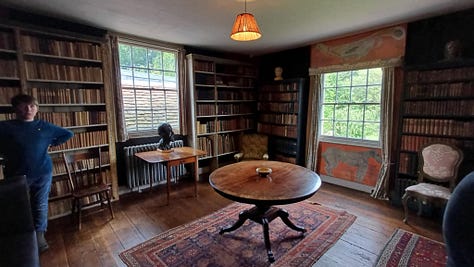
Each room in the house is labelled - Maynard Keynes’ bedroom; Vanessa Bell’s studio, etc. And all are slightly differently furnished, perhaps reflecting the nature of the occupant and their interests. Really, I just want to live there, and I came home full of ideas to start painting everything (a friend did sagely ask what my husband would make of ‘bums on the mantelpiece’, which is a good question).
The garden feels a part of the house - or vice versa - especially around Vanessa’s bedroom and studio; it is designed for solitary wandering or friendly chatting, or reading by the pond.
I’ve always said that I find that reading and looking have never been enough for me; I want to live the things that inspire or move me, and at Charleston I feel I got a glimpse of what it would feel like to do just that.
Rural Hours is next on my list, when I have finished reading about Charleston!
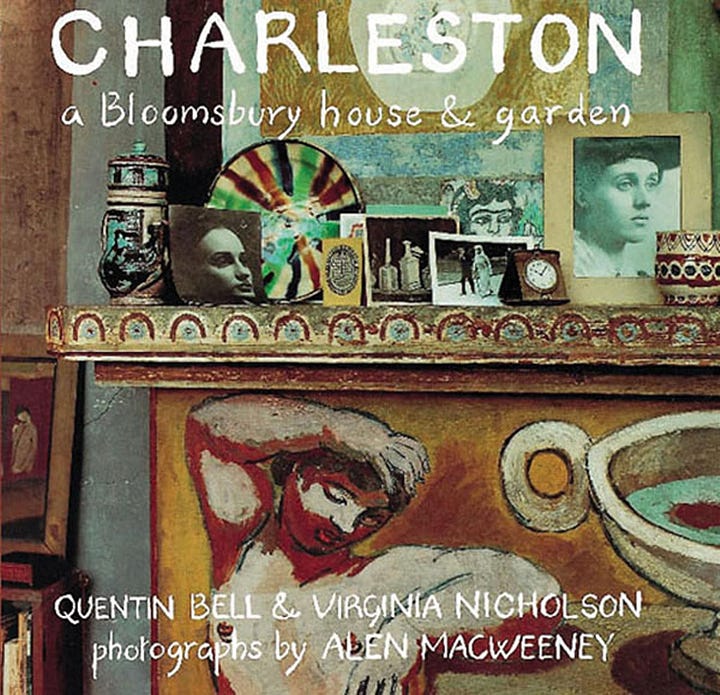
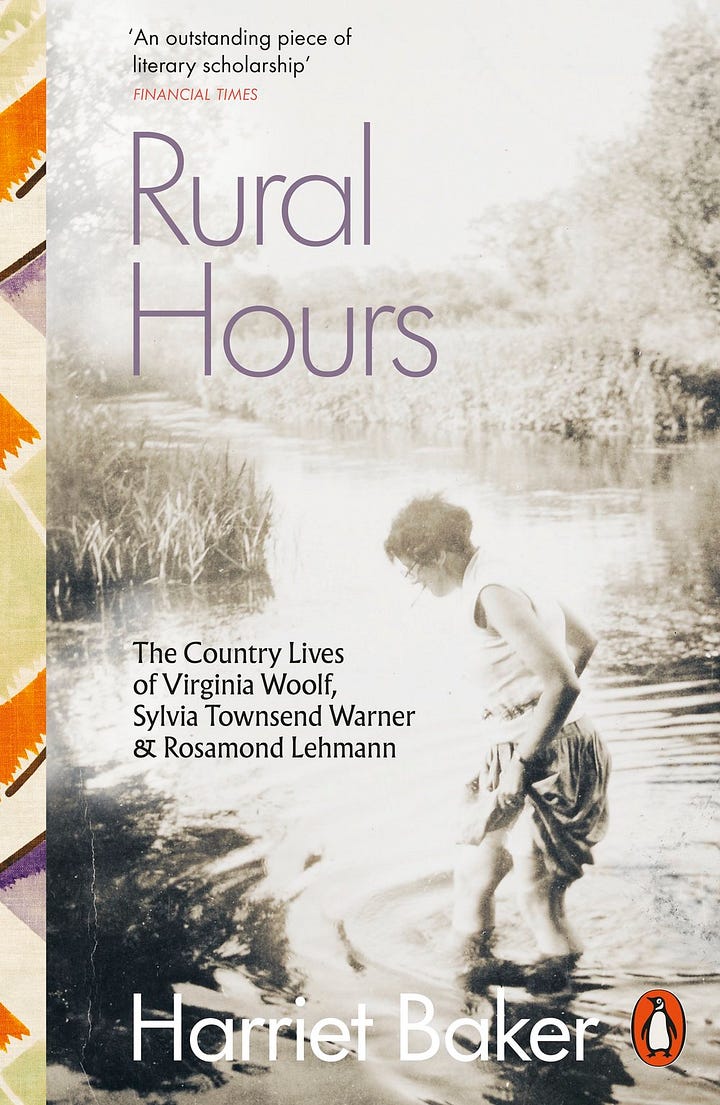



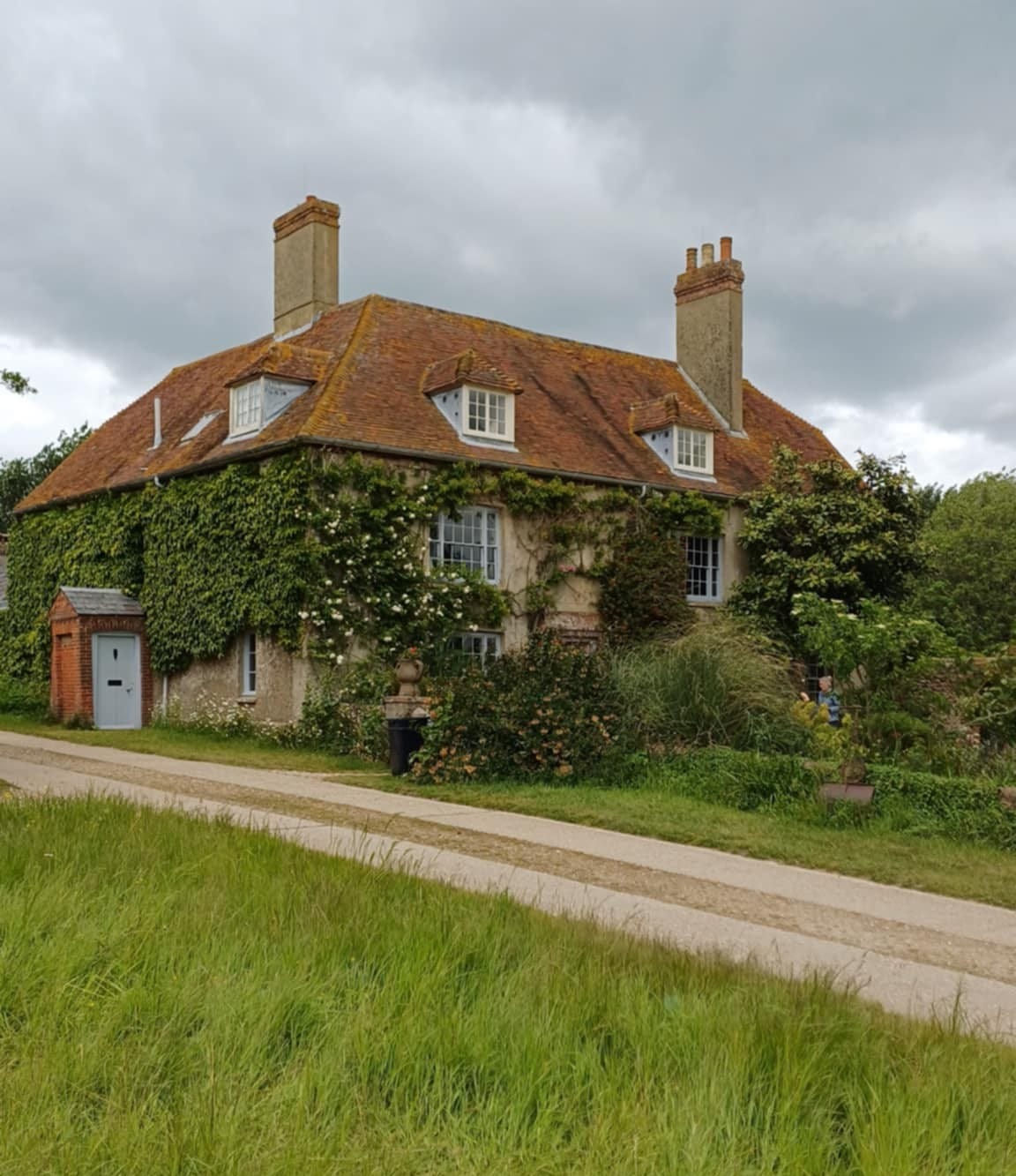

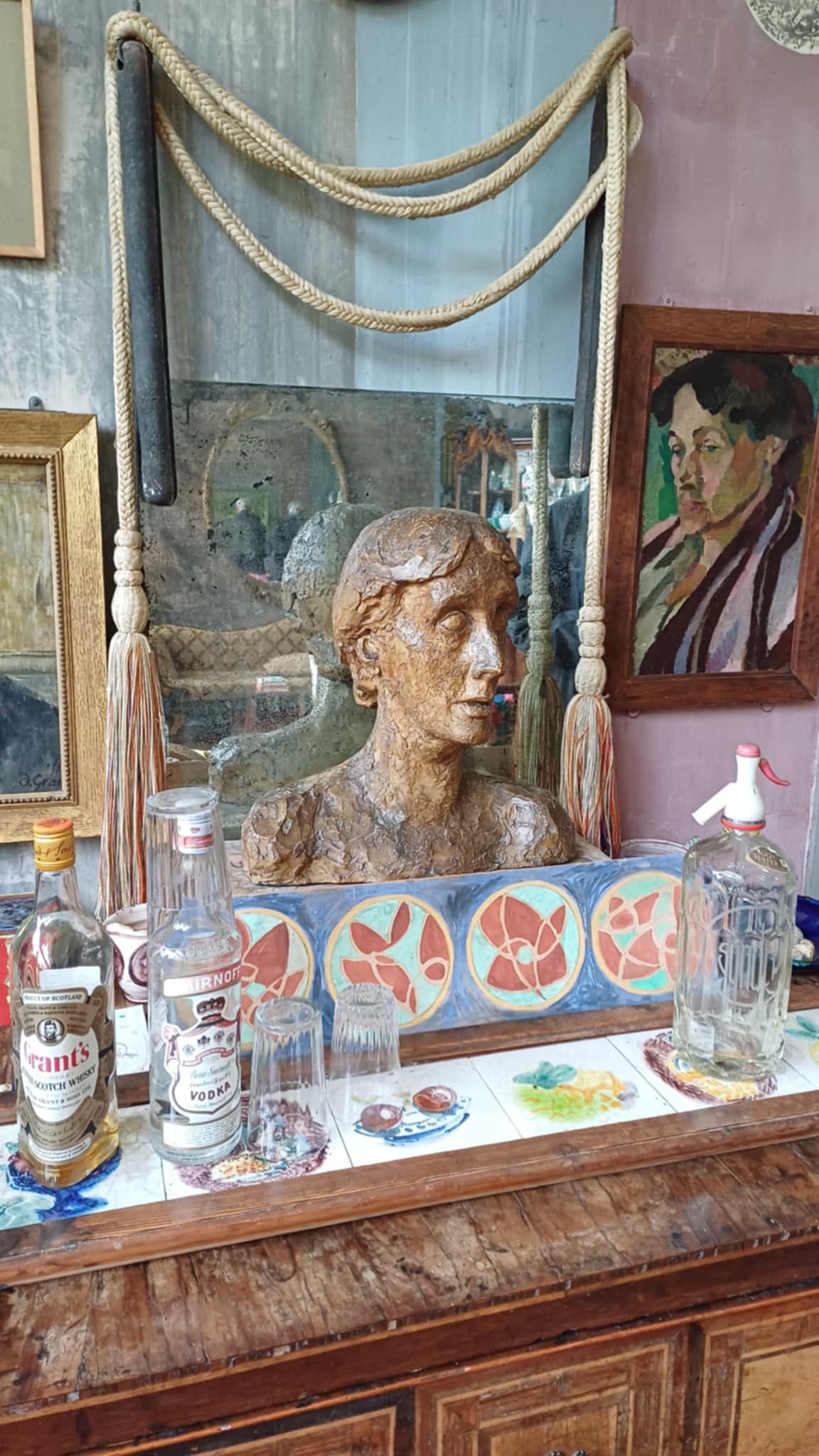
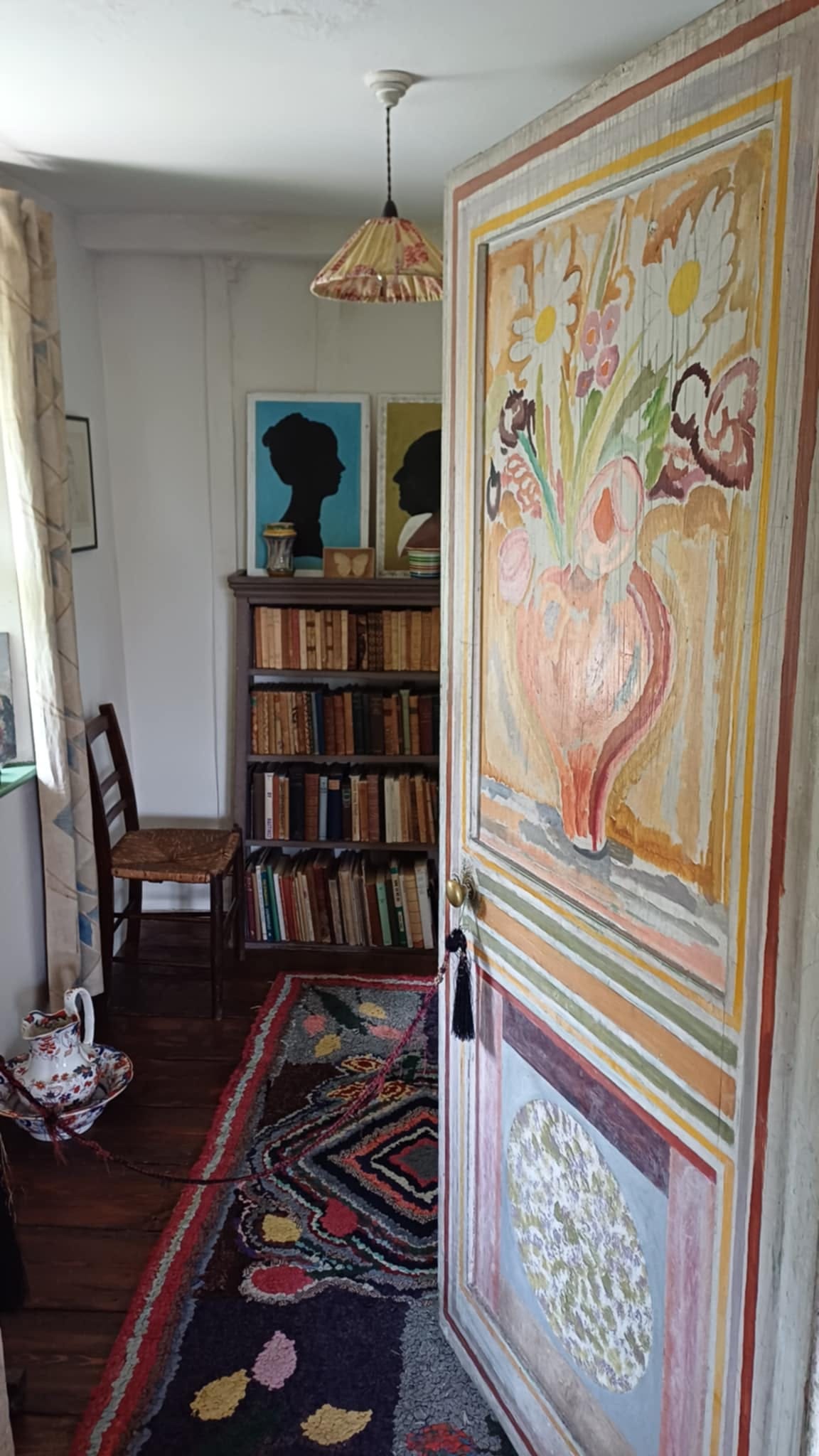

Profound thanks. I’ll never physically get there. Ellen